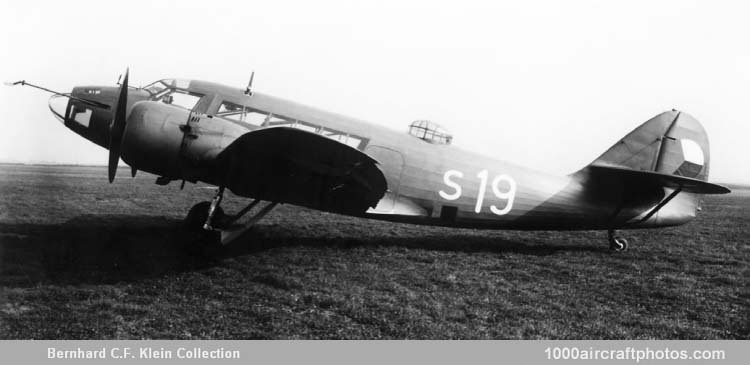The promise evinced by the A-204 resulted, in 1937, in the Czechoslovakian Ministry of National Defense placing an order for fifteen examples of a projected three-seat light reconnaissance-bomber derivative, designated A-304. The pictured prototype was first flown in 1937 and deliveries commenced in the following year.
Although the basic structure of the commercial A-204 was retained unchanged, apart from some local strengthening, a glazed nose cone was introduced for the bombardier-observer, a manually-operated turret was provided in the upper decking of the rear fuselage housing a single 0.312 in (7.92 mm) machine gun, a similar weapon was mounted above a hatch in the fuselage floor, and a third was fixed to fire forward in the port side of the nose.
Racks were provided for a single 220.5 lb (100 kg) or 441 lb (200 kg) bomb beneath the fuselage and two 110 lb (50 kg) or six 22 lb (10 kg) or 44 lb (20 kg) bombs beneath the wings. Provision was made for the installation of one manually-operated reconnaissance camera in the nose and an automatic camera aft, and the Pollux engines were replaced by Walter Super-Castor I-MR nine-cylinder radial air-cooled engines which were supercharged to give 460 hp for take off.
The A-304 was of mixed construction, the cantilever low-wing being a wooden structure with plywood skinning and the fuselage being a welded steel-tube structure with fabric covering. The duralumin landing flaps and the retractable main landing gear members were hydraulically operated. All fuel was housed in the wings, total capacity being 244 gal (924 l), and provision was made for the installation of dual controls and a seat for a pupil to starboard of the pilot for the training role.
Delivery of the fifteen A-304s had been completed when German forces occupied Bohemia and Moravia, and the aircraft were promptly seized by the Luftwaffe. Several had all armament removed and were placed in service by the Flugzeugfuhrerschule (pilot school) A/B 71 at Prostejov, near Olomouc, in Moravia, and the remainder were supplied to the Buglarian Air Force in 1941 after Bulgaria signed the Axis Tripartite Pact, equipping a light reconnaissance-bomber squadron that was engaged on coastal patrol until 1943 when the surviving A-304s were relegated to the communications role."
Span: 62 ft 11.75 in (19.18 m)
Length: 43 ft 3.75 in (13.20 m)
Height: 11 ft 1.75 in (3.40 m)
Wing area: 486.529 sq.ft (45.2 sq.m)
Weight empty: 6,614 lb (3000 kg)
Max weight: 10,275 lb (4,661 kg)
Max speed: 200 mph (322 kmh) at 5,740 ft (1,750 m)
Cruise speed: 180 mph (290 kmh) at 5,740 ft (1,750 m)
Climb: to 6,562 ft (2,000 m) 7.5 min
Service ceiling: 19,029 ft (5,800 m)
Range: 746 mls (1,200 km)
